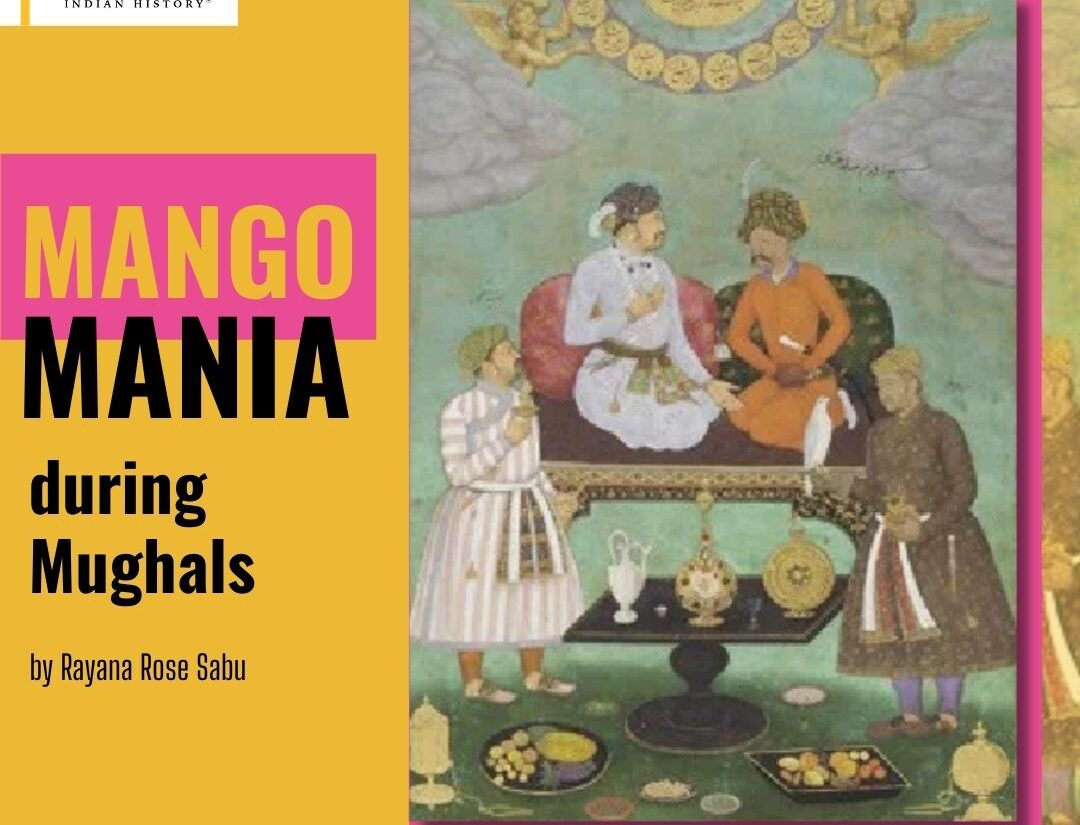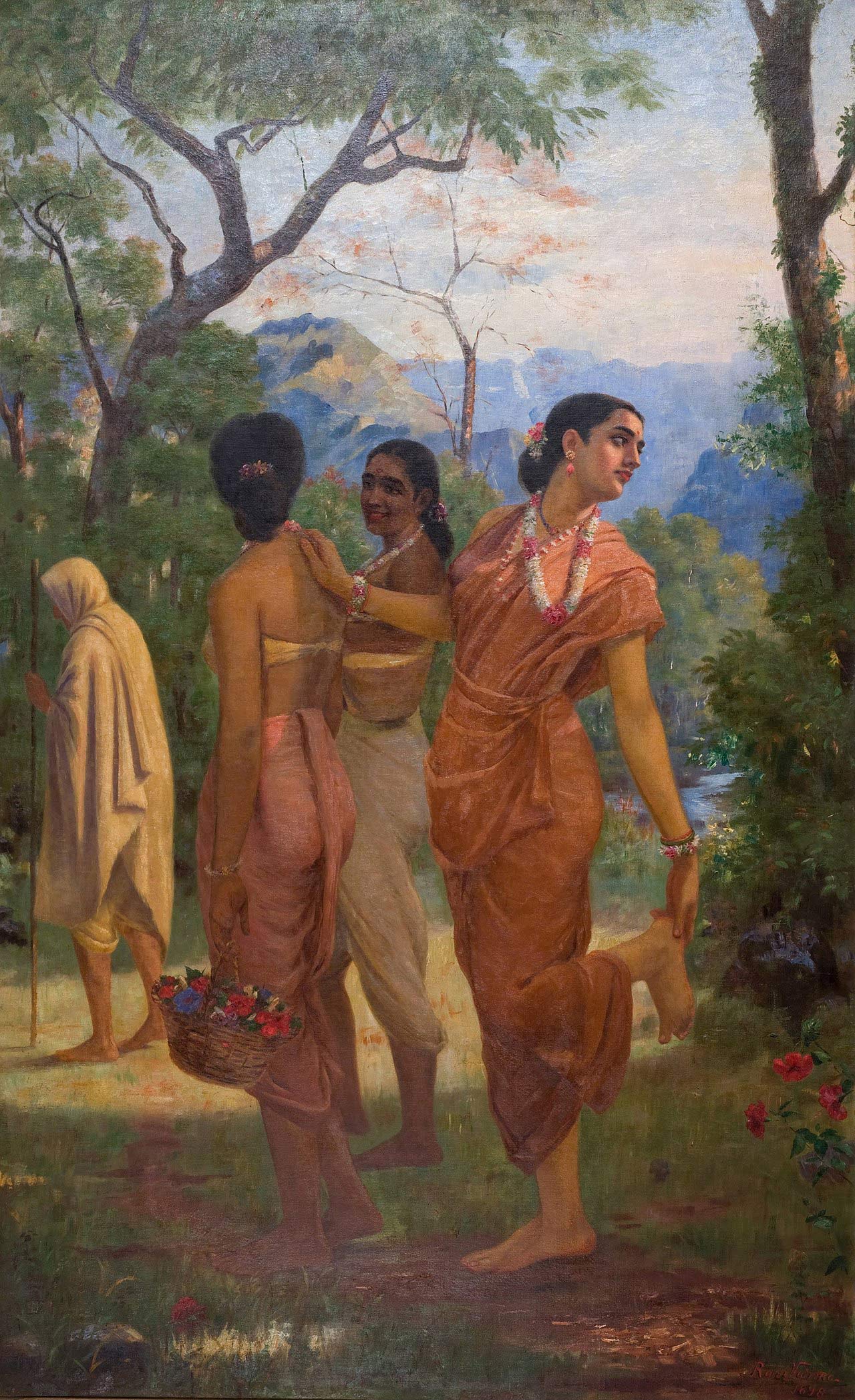
Article written by EIH Researcher and writer
Rayana Rose Sabu
“…in spite of the excellence of the fruits of Kabul, not one among them is as delicious as the mango”
-Jahangirnama
As we bid adieu to spring and the temperature slowly raises and we step into summer season the land is smothered by the oppressive heat, and the earth has drained. The sweltering heat brings out serpents and sparrows in search of pools of water, and a balmy breeze drifts through the trees that rustle the mango tree leaves and carries the sweet, warm scent of ripe mangoes that turned golden in the summer sun. With its chaotic heat, the summer season is often tolerated because it brings a bountiful harvest of mangoes. These syrupy delights, which have earned the title “King of fruits,” are loved by royalty and simple people. Even the mighty Mughals were susceptible to mangoes’ allure and tantalising aroma.
In a subcontinent that boasts 1500 varieties of mangoes, the love affair goes back centuries. It appears in Buddhist and Vedic writings, Ashokan inscriptions, and the journals of foreign travellers like Hiuen Tsang. The mango also made its way into the poems of Amir Khusrau and Mirza Ghalib.
Babur was one of the first Mughals to come to India from Samarkand. According to the stories, Babur was lured to India by mangoes. In addition to the invitation to challenge Ibrahmin Lodhi, Lodhi is supposed to have sent him a preserve prepared from half-ripe mangoes and honey. Mangoes would later become the Mughals’ passion, appearing in their cooking, gardens, artwork, and even memoirs!
Babur frequently yearned for his native country and could not fully adjust to the Indian subcontinent. When talking about Indian fruits, he often compared the melons and peaches of Central Asia. Whenever he experienced waves of homesickness, he complained about everything in India, including the dry weather and the lack of irrigation systems for his gardens, which prevented him from growing his favourite melons. However, it appears that something about the mango managed to connect with him. If not his favourite fruit in India, he claims it to be the greatest. Babur, an enthusiastic gardener, would later plant numerous mango trees in his well-known garden in Dholpur.
He writes in the Baburnama: “Mangoes, when good, are very good. They are usually plucked unripe and ripened in the house. Unripe, they make excellent condiments, are also good preserved in syrup. Taking it all altogether, the mango is the best fruit of Hindustan. Some so praise it as to give it preference over all fruits except the musk-melon. Such praise outmatches it. It resembles the kardi peach. It ripens in the rains. It is eaten in two ways: one is to squeeze it to a pulp, make a hole in it, and suck out the juice, the other, to peel and eat it like the kardi peach. Its tree grows very large and has a leaf somewhat resembling the peach tree. The trunk is ill-looking and ill-shaped, but in Bengal and Gujrat is heard of as growing handsome”
At the Battle of Chausa, Sher Shah Suri triumphed over Humayun, Babur’s son. To honour his victory over Humayun, Suri named “Chausa mango”, to a particular variety of mango. Humayun had to leave India and spent a significant portion of his life evading capture. Despite this, he was able to order mangoes for himself to be delivered while he was on the run. He is even credited with naming a mango variety after himself, the “Humayun Pasand.” Today, both of these kinds are still cultivated.
At Darbhanga, Akbar constructed an enormous garden where he planted more than lakh mango trees. Thus, “Lakhi Bagh” was the name given to the garden. Ain-i-Akbari, written by Abul Fazl, the court chronicler of Akbar, contains extensive descriptions of the mango and the tree. Given how frequently he mentions them in the Jahangirnama, mangoes were particularly beloved to Jahangir. He refers to Akbar’s love of them, his own rides through mango gardens, descriptions of locations where mango trees always appear, placing orders for mangoes, overseeing their arrival, measurement, and ripening, and even a man’s demise from eating too many mangoes. According to stories, Noor Jahan created wines for Jahangir using mangoes and roses. During this time, it was also rumoured that mangoes were utilised as aphrodisiacs.
The patronage for the fruit was such that mangoes were offered as gifts on religious and festive occasions to foster diplomatic ties with colleagues, envoys, and adjacent kingdoms. Throughout Aurangzeb’s reign, mangoes have been used for various purposes, including diplomatic and romantic ones. Mangoes were brought to the Shah of Iran by Aurangzeb as a diplomatic present, according to a record. When Aurangzeb and his sister Jahanara were reunited, it is said that this reunion took place while enjoying a feast of various mango delicacies. This custom would be carried on by Jahanara, who would use mangoes to bargain with Aurangazeb. Mangoes appear to be one indulgence that Aurangzeb was unable to give up, despite his austerity and piety.
His romance with Hirabai is entwined with the mango’s narrative. It is reported that Hirabai caught Aurangzeb’s attention for the first time as she was picking mangoes from a tree in his aunt’s Burhanpur garden. Nuskha Dar Fanni Falahat, a detailed treatise on mangoes written by Dara Shikoh, includes information on the various varieties of mangoes cultivated in orchards and grafting techniques.
This rich fruit was also featured in the writings and paintings of the Mughal monarchs. These stunning Mughal miniature paintings focus solely on the mango fruit. Mango Trees with Peafowls is the name of one such painting from Babur’s time that may be seen in the Illustrated Babur Nama. A peacock and a peahen may be seen strolling casually below three lush green mango trees packed with delicious mangoes. Another miniature depicts Jahangir entertaining Shah Abbas, the king of Persia, and features more exotic fruits like oranges, lemons, pineapple, bananas, and mangoes on the plate to Jahangir’s right and more traditional Central Asian fruits like apples, grapes, and melons on the plate to Jahangir’s left. Mangoes are mentioned frequently in Aurangzeb’s letters to his son. One letter reads as follows: “Exalted son, I was much pleased with the basket of mangoes sent by you to your old father. You have requested me to suggest names for the mangoes. When you yourself are very clever, why do you give trouble to your old father? However, I have named them ‘Sudharas’ and ‘Rasnavilas'”
Aurangazeb used the Sanskrit name that roughly translates into ‘divine nectar’ and ‘relishable to the palate’ while naming the mangoes. Aurangzeb is reputed to have pined for mangoes until his death.
The Mughals’ love affair with mangoes is one for the history books. This delightful fruit continues to attract people with its heady scents, sugary sweetness, and golden hue centuries later. So, as the temperatures rise and the sun beats down, it’s time to bite into a delicious mango and reminisce about the Mughals and their affection for the King of Fruits.
SOURCES
- Desk, N. (2020, May 2). Mango—King of fruits—loved by kings and commoners. The Siasat Daily. https://www.siasat.com/mango-king-fruits-loved-kings-and-commoners-1883075/
- Potnis, A. (2020, May 21). Of Mangoes and The Mughals. Ashutosh Potnis. https://ashutoshpotnis.wixsite.com/home/post/of-mangoes-and-the-mughals
- Writer, S. (2022, June 13). Mangoes, Mughals, Hindu & Buddhist Traditions | Madras Courier. https://madrascourier.com/insight/mangoes-mughals-hindu-buddhist-traditions/




















